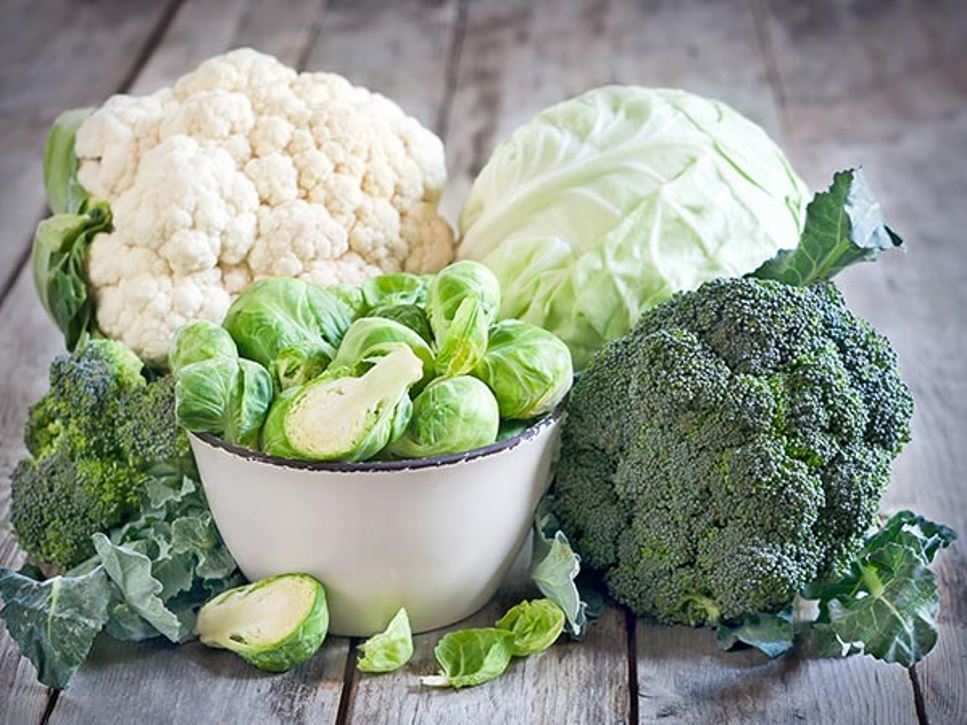What do kale, arugula and Brussels sprouts have in common? Aside from being trendy ingredients, they’re all delicious cruciferous vegetables and pack a nutritional punch.
Cruciferous veggies are a diverse group that includes broccoli, cauliflower, cabbage, kale, bok choy, arugula, Brussels sprouts, collards, watercress and radishes. Fun fact: The name “cruciferous” is an informal classification for members of the mustard family and comes from the Latin cruciferae meaning “cross bearing,” because the four petals resemble a cross.
While these veggies grow in all different colors, shapes and sizes, they share several nutritional benefits. Most cruciferous vegetables are rich in vitamins and minerals such as folate and vitamin K. Dark green cruciferous veggies also are a source of vitamins A and C and contain phytonutrients — plant-based compounds that may help to lower inflammation and reduce the risk of developing cancer. Cruciferous vegetables also are rich in fiber and low in calories, a combination that will help you feel full and satisfied without overeating.
It doesn’t take much to reap the benefits. Adults need at least 2½ cups of vegetables a day. One cup of raw and cooked veggies, such as broccoli, cauliflower and Brussels sprouts, is equivalent to a 1-cup vegetable serving. Two cups of raw leafy vegetables, such as kale and bok choy, are the equivalent of a 1-cup vegetable serving.
Ready to add more cruciferous veggies into your diet? These tips will make packing in your vitamins and minerals easy and enjoyable.
Cauliflower
This versatile veggie is delicious in many ways beyond steaming. Try roasting florets or “steaks” of cauliflower to release its pleasant flavor. When pureed, it’s a great substitute to cream sauce. Other creative cauliflower options? Mash into a pizza crust, grate it into a substitute for rice or pickle it for a low-calorie salty, crunchy snack.
Brussels Sprouts
Brussels sprouts practically beg to be in the oven. For a melt-in-your-mouth side, roast and toss with something sweet, such as dried fruit or maple syrup, as well as something savory — anything from Parmesan cheese to sliced olives.
Kale
The almighty kale is a wonderful green for salads. Remove the tough stem, slice into thin ribbons and toss with toppings, dressing and all. Best of all, this hearty green will not wilt for days, making it a great option for packing ahead. To balance the bitter bite, pair it with something sweet such as roasted carrots, diced apple or dried fruit. Kale also is a great addition to smoothies and can even be baked into crisp chips.
Arugula
Arugula is one of the easiest greens to grow in your garden or in a planter. Enjoy this spicy leaf pureed into a pesto with a kick, tossed onto whole-wheat pizza once it emerges from the oven or used in a variety of tossed salads. For a classic combination try fresh arugula paired with feta cheese, cubed watermelon and a balsamic dressing.
Find a Nutrition Expert
Looking for credible nutrition information and recommendations? The Academy of Nutrition and Dietetics' network of credentialed food and nutrition practitioners are ready to help!
